12 Wild Animals in Rwanda [Wildlife in Rwanda]
Want to know more about the wildlife in Rwanda?
Discover 12 wild animals in Rwanda in this post, as well as interesting facts about them. 🇷🇼
Learn All About Rwandan Animals
Ready to learn all about Rwandan animals?
I’ve always been fascinated by animals and by how they can be so different from one country to another. In this guide, we’ll focus on the many animals Rwanda has on the land, in the sky, and underwater.
I’ve split the guide into 6 categories:
- Native animals from Rwanda
- Endangered animals of Rwanda
- What is Rwanda national animal?
- How many animals native to Rwanda?
- Which golden animal is Rwanda famous for?
- Are there snakes in Rwanda?
Let’s dive in right away with our first category!
Native Animals from Rwanda
Rwanda is a small, landlocked African country located in the central part of the continent, at the crossroads of Southeast Africa and the African Great Lakes region. It is one of the smallest countries in all Africa, is high in altitude (which is why it is often nicknamed “the land of the thousand hills”), has one of the youngest populations in the world (with an average of 19 years old), and used to be a German colony. It is bordered by Burundi, Tanzania, Uganda, and the Democratic Republic of the Congo, and its capital and largest city is Kigali, which counts more than 859,000 inhabitants (but more than 1,132,000 if you include the metropolitan area).
An interesting part of the country that I wanted to tackle is its wildlife. In light of that, I have listed the best of it, and I hope you will love learning what animals live in Rwanda.
Here’s the Rwanda animals list.
1. Eastern gorilla
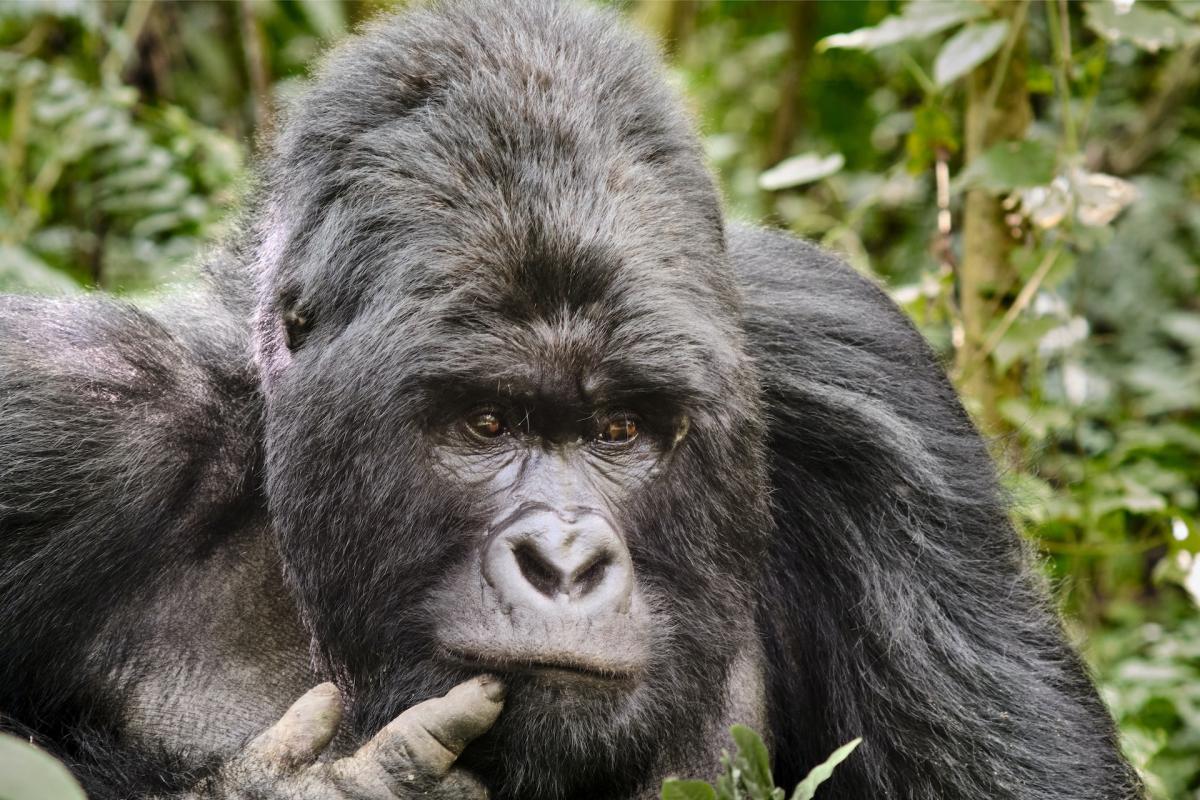
- Name: Eastern gorilla
- Scientific name: Gorilla beringei
- Conservation status:
Rwanda is definitely a wonderful country: it is one of the few places in the world where you can witness the true might of gorillas, in their natural habitat.
The eastern gorilla is the largest primate in the world. It is further divided into two subspecies (the mountain gorilla and the eastern lowland gorilla), and there are fewer than 5,000 individuals left. Although protected throughout its range, the primary threat to eastern gorillas is illegal hunting.
2. Eastern chimpanzee
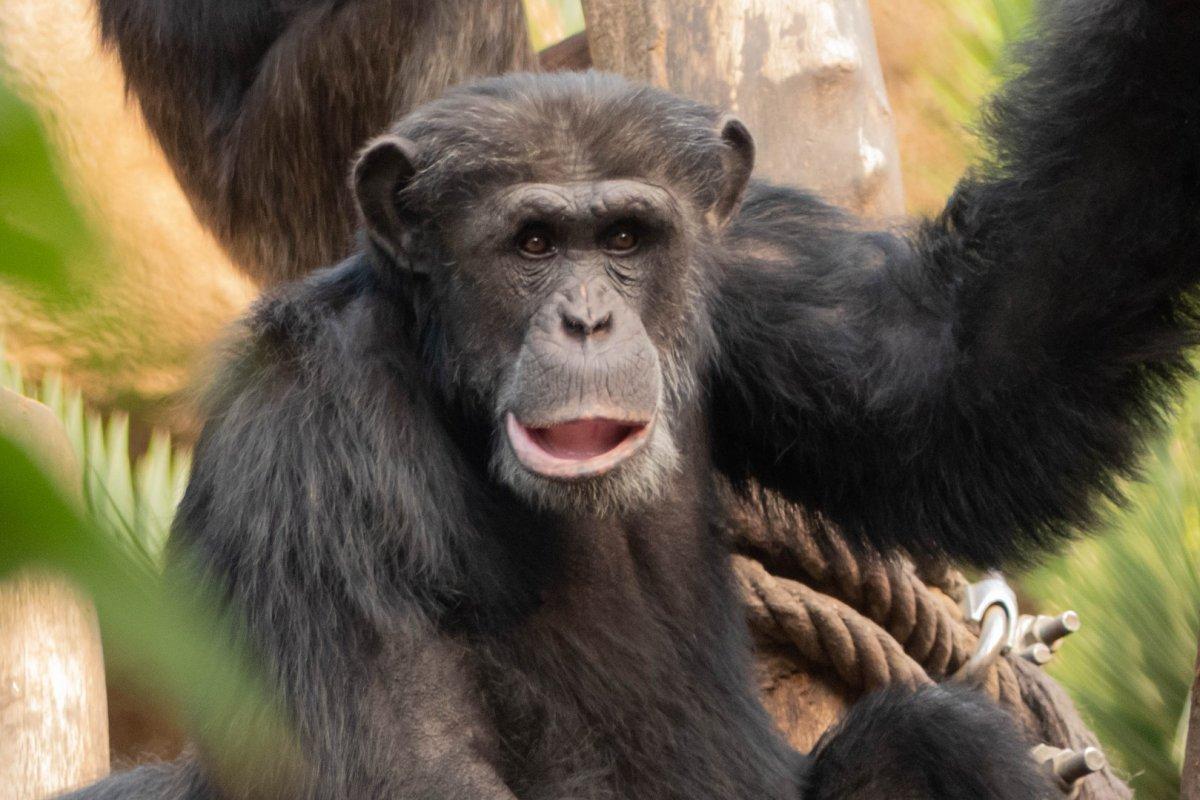
- Name: Eastern chimpanzee
- Scientific name: Pan troglodytes
- Conservation status:
After one iconic African primate comes another, and one of the most closely related animals to humans: the chimpanzee, or simply chimp.
The chimpanzee is a species of great ape native to the savannas and forests of tropical Africa. It is further divided into several species, and the one that can be found in Rwanda is the eastern chimpanzee. Aside from hunting, habitat loss poses a serious issue to the survival of this species in its natural habitat.
3. Hippopotamus
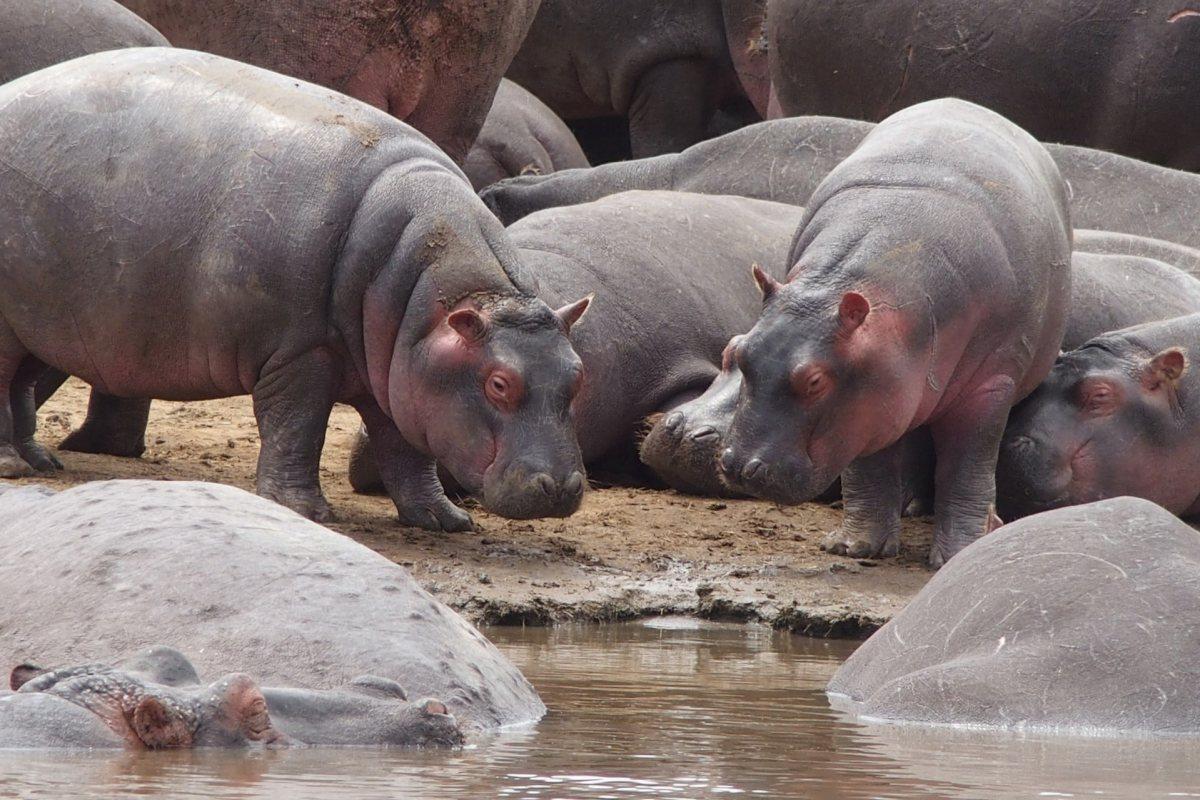
- Name: Hippopotamus
- Scientific name: Hippopotamus amphibius
- Conservation status:
The hippopotamus, also known as the common hippopotamus, the river hippopotamus, or simply the hippo, is a large species of semi-aquatic ungulate native to much of sub-Saharan Africa; however, its current range is much, much smaller than its native one, and it lives in scattered populations across the continent.
This mammal is, in fact, one of the most dangerous animals in Africa: with a very unpredictable and highly aggressive behavior, it can charge at up to 30 km/h / 19 mph!
4. Topi
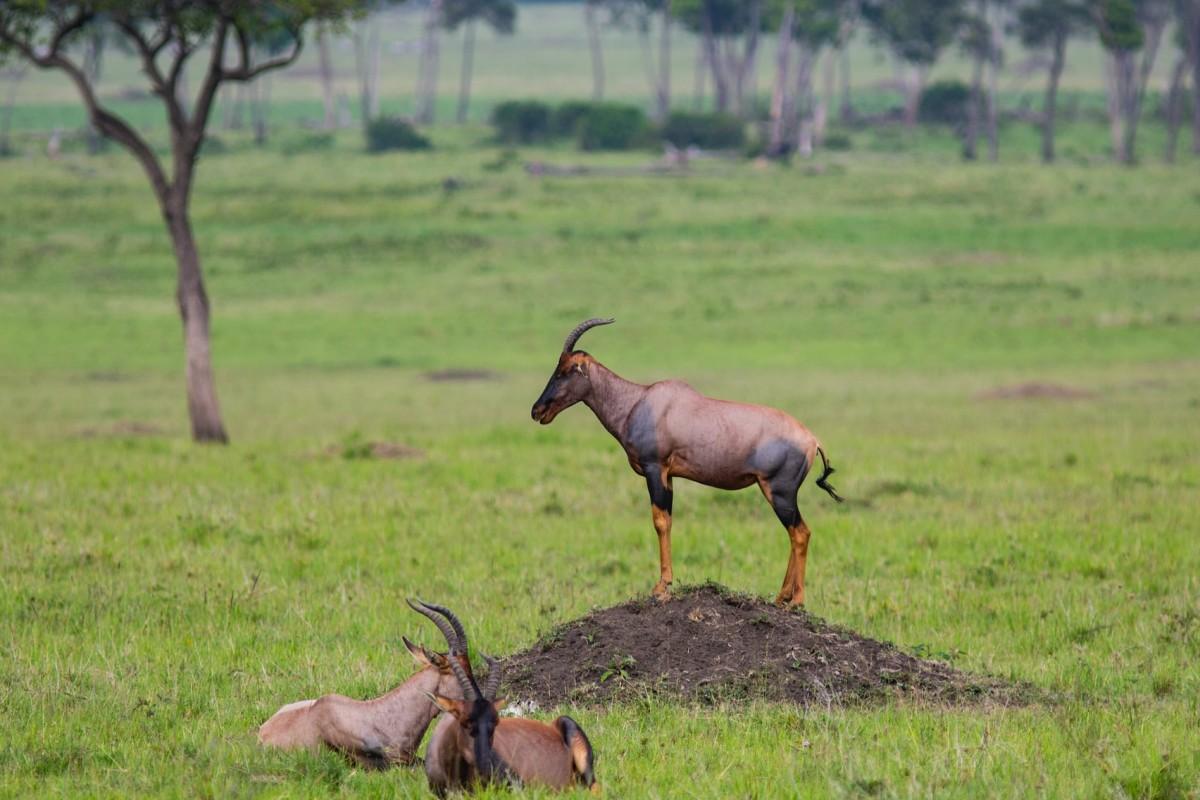
- Name: Topi
- Scientific name: Damaliscus lunatus jimela
- Conservation status:
The topi is a species of antelope native to sub-Saharan Africa. It is highly social and pretty fast and inhabits savannas, floodplains, and semi-deserts.
Aside from Rwanda, the topi can only be found in Kenya, Tanzania, the Democratic Republic of the Congo, and Uganda. There are about 800 individuals in the country, and their population is growing, supposedly due to the lack of natural predators within their range.
5. Shoebill
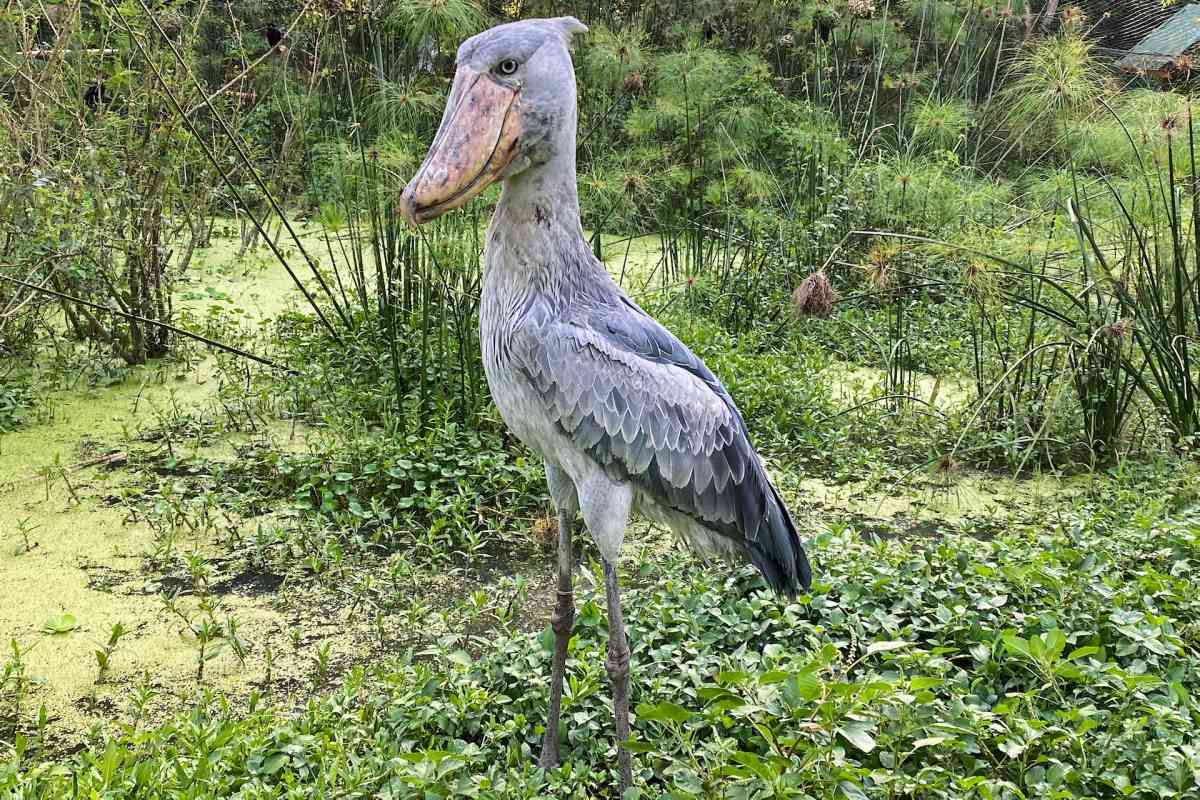
- Name: Shoebill
- Scientific name: Balaeniceps rex
- Conservation status:
The shoebill, also known as the shoebill stork, the whale-headed stork, or the whalehead, is a very peculiar species of bird that you might have already seen. It gets its name from its unique, large, and shoe-shaped bill, and it is related to herons and pelicans.
This very large bird lives in tropical east Africa, usually in vast swamps. When flying, it retracts its neck and holds its wings flat.
6. Hooded vulture
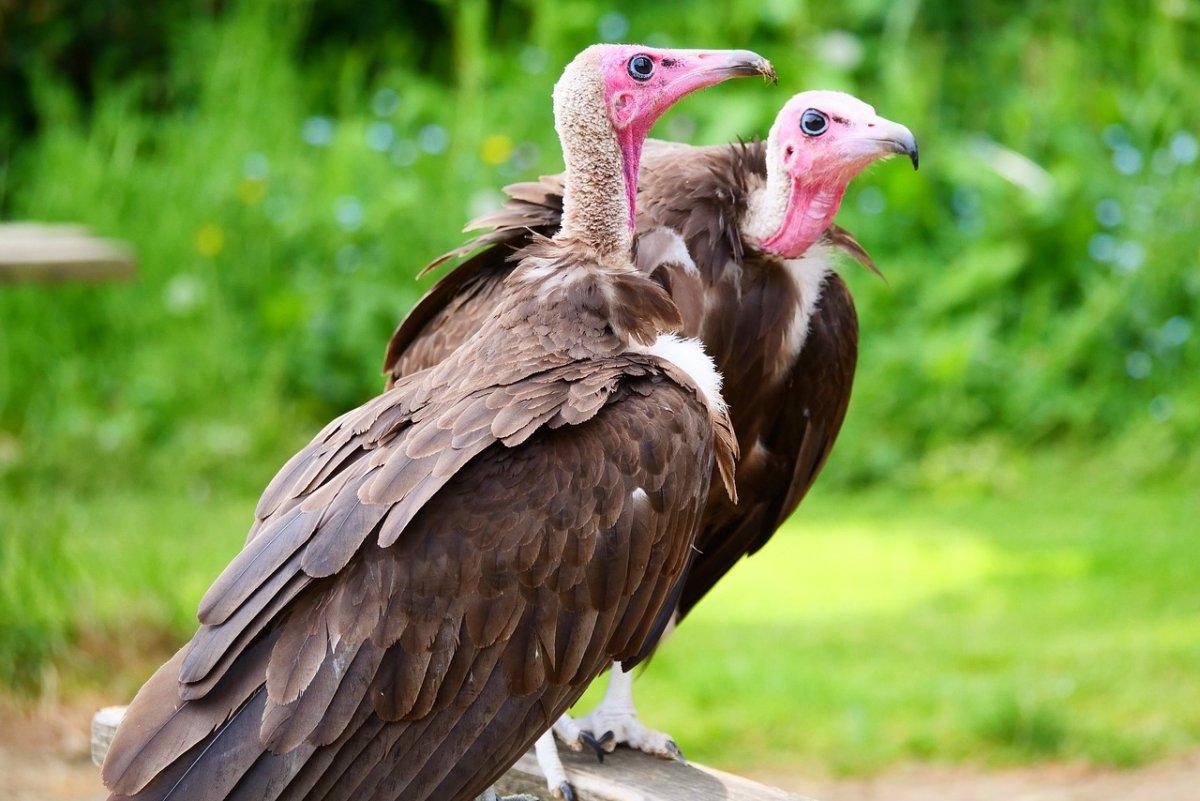
- Name: Hooded vulture
- Scientific name: Necrosyrtes monachus
- Conservation status:
The hooded vulture is a species of Old World vulture native to sub-Saharan Africa. Its distribution is widespread but very uneven, and only a few relict populations remain in parts of southern, eastern, and western Africa. Its populations have declined by more than 85 percent over the last 50 years.
This vulture is relatively small, and it scavenges on carcasses of wildlife and domestic animals. It was named after its downy hind neck which looks like a hood.
7. Gray crowned crane
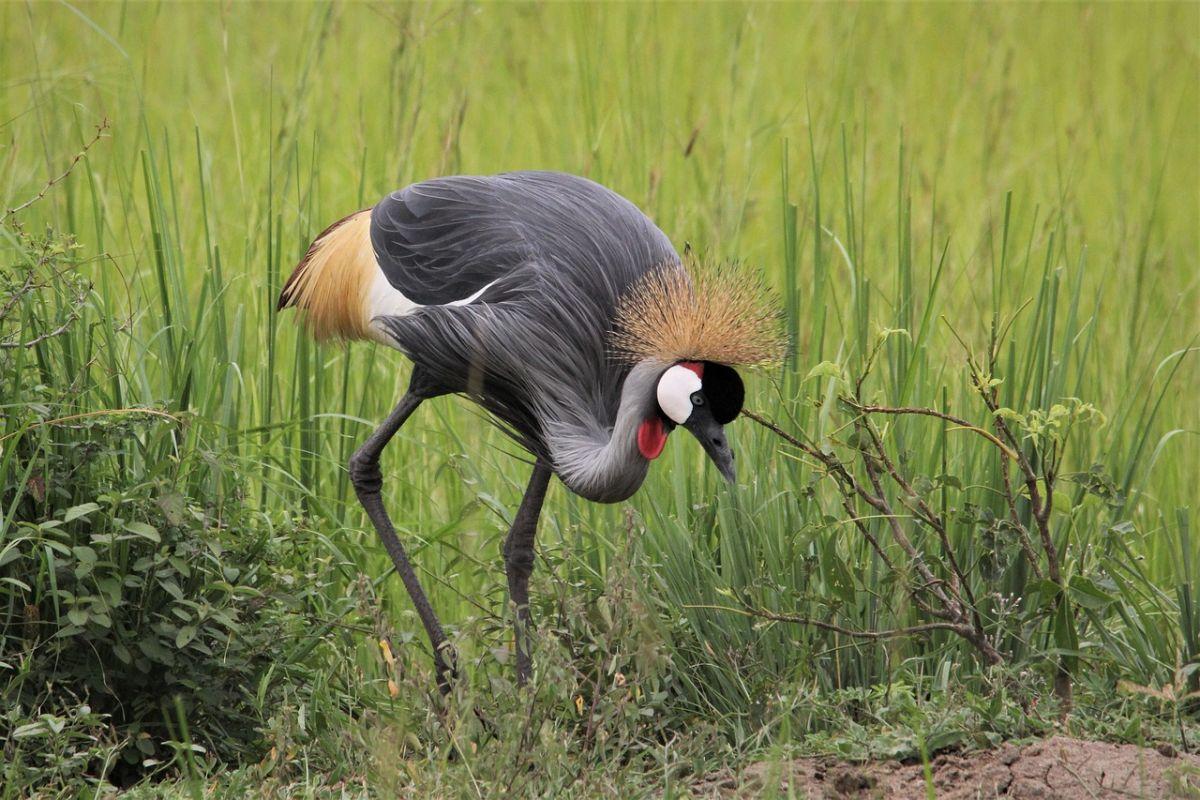
- Name: Gray crowned crane
- Scientific name: Balearica regulorum
- Conservation status:
The gray crowned crane, also known as the crested crane, the East African crowned crane, or the Kavirondo crane, is a species of bird native to eastern and southern Africa. It has a unique appearance, with a golden crown on top of its head, and is an important symbol in Africa: for instance, it is the national bird of Uganda.
This crane inhabits dry savannas, but also marshes, grassy flatlands, and cultivated lands.
8. Impala
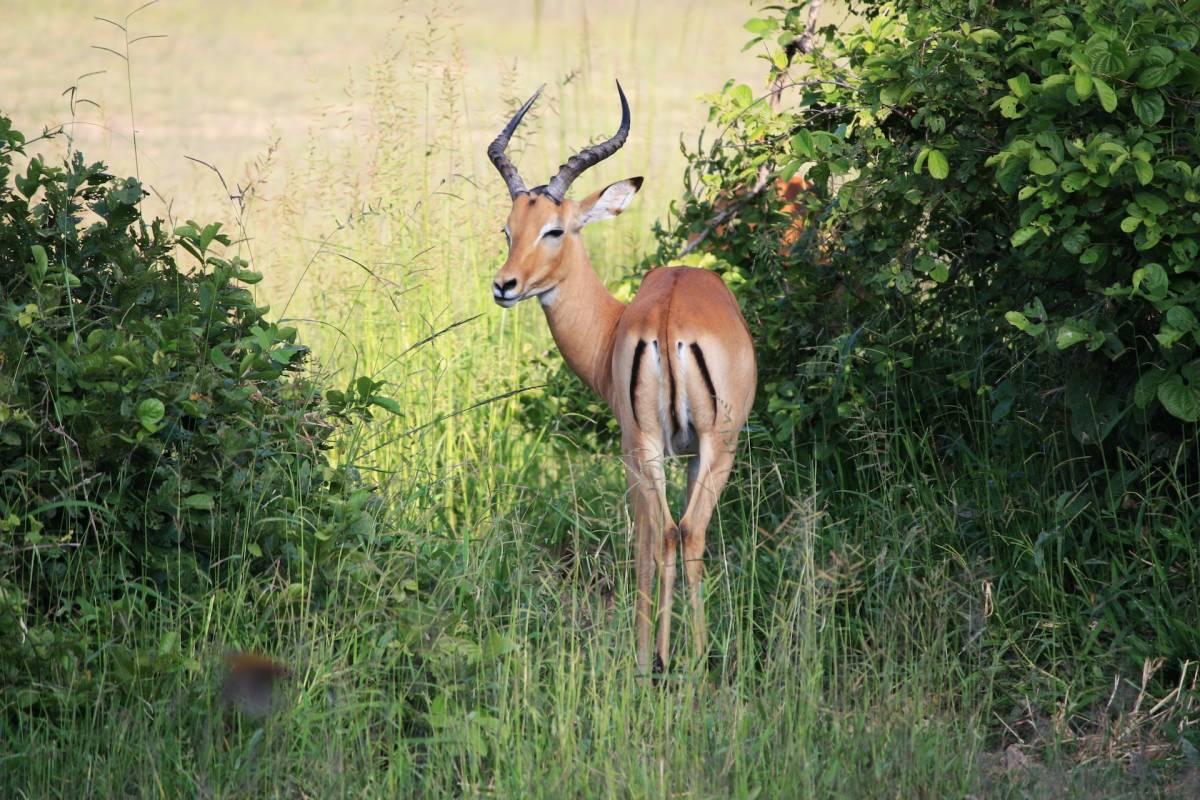
- Name: Impala
- Scientific name: Aepyceros melampus
- Conservation status:
The impala is a medium-sized species of antelope native to eastern and southern Africa. It is primarily active during the day and can be territorial and social depending on the situation. It has a preference for shade, and will often stay near cover.
This antelope is characterized by its huge leaps of up to 3 m / 9.8 ft over the ground: it can jump over vegetation and even other individuals!
9. Masai giraffe
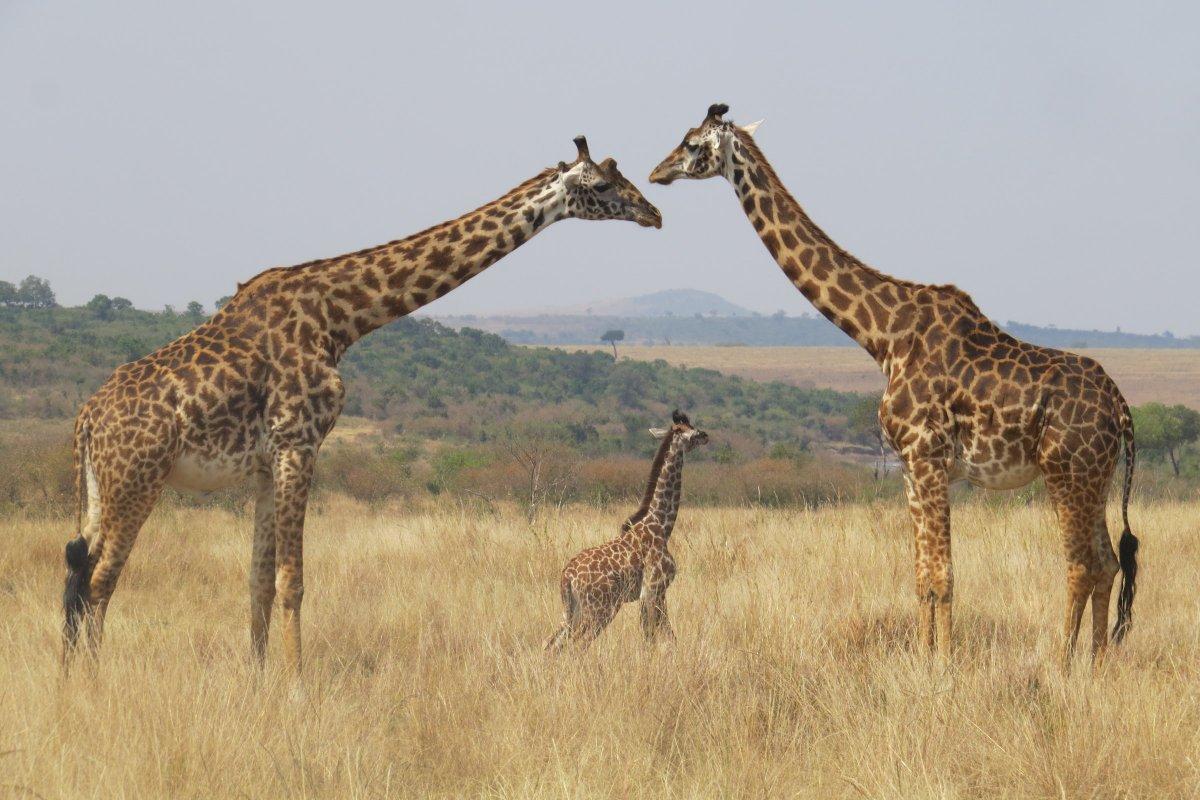
- Name: Masai giraffe
- Scientific name: Giraffa tippelskirchi tippelskirchi
- Conservation status:
The Masai giraffe is the species of giraffe that you will find in the savanna region of the Akagera National Park, and it is one of Africa’s most well-known and important animals. It is the tallest terrestrial animal in the world, as well as the largest ruminant.
Giraffes are seriously threatened by habitat loss and bushmeat hunting, and they have disappeared from countries such as Guinea, Senegal, Mauritania, and Angola; however, they have been introduced to others, such as Eswatini and Rwanda.
10. African bush elephant
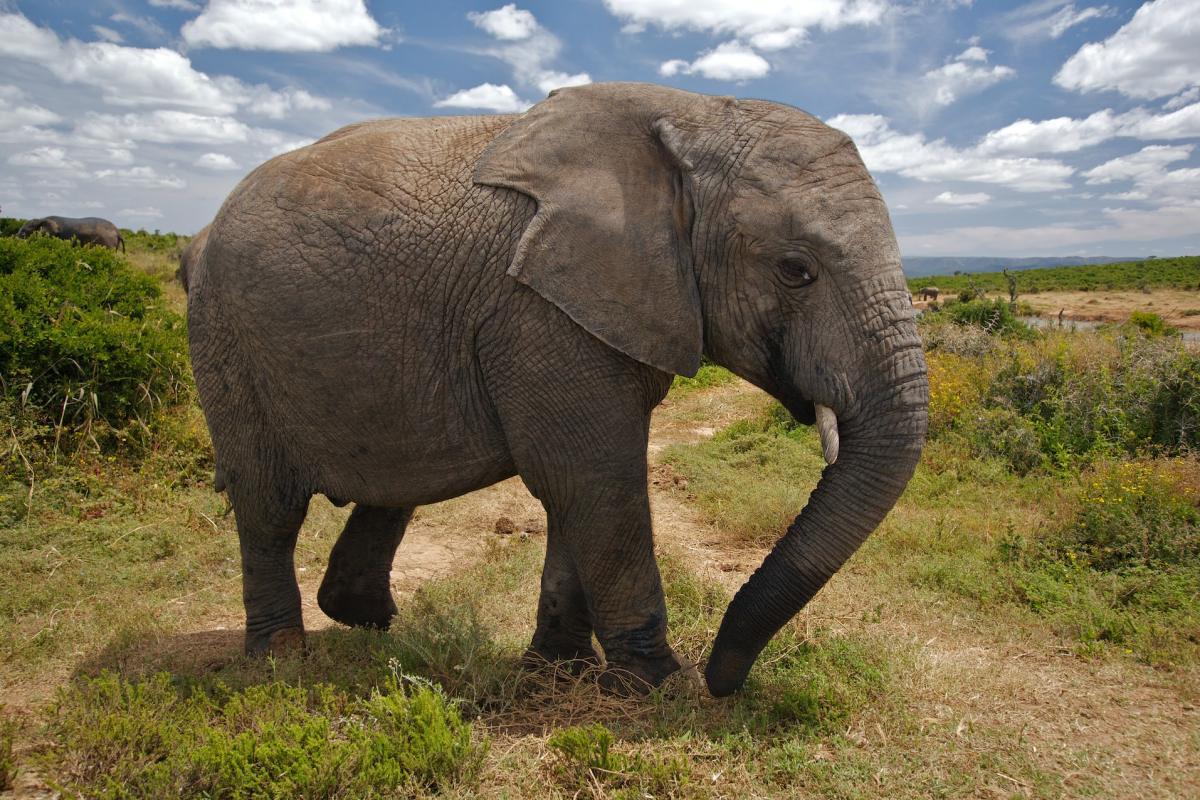
- Name: African bush elephant
- Scientific name: Loxodonta africana
- Conservation status:
After the tallest terrestrial animal comes the largest one: the African bush elephant! Alongside the African forest elephant (native to more western parts of Africa), the African bush elephant is one of two African species of elephant. It is threatened by poaching for its ivory and meat, as well as habitat loss.
While adult male African bush elephants tend to live alone or in small bachelor groups, females and their offspring gather in more or less large groups.
11. Burchell’s zebra
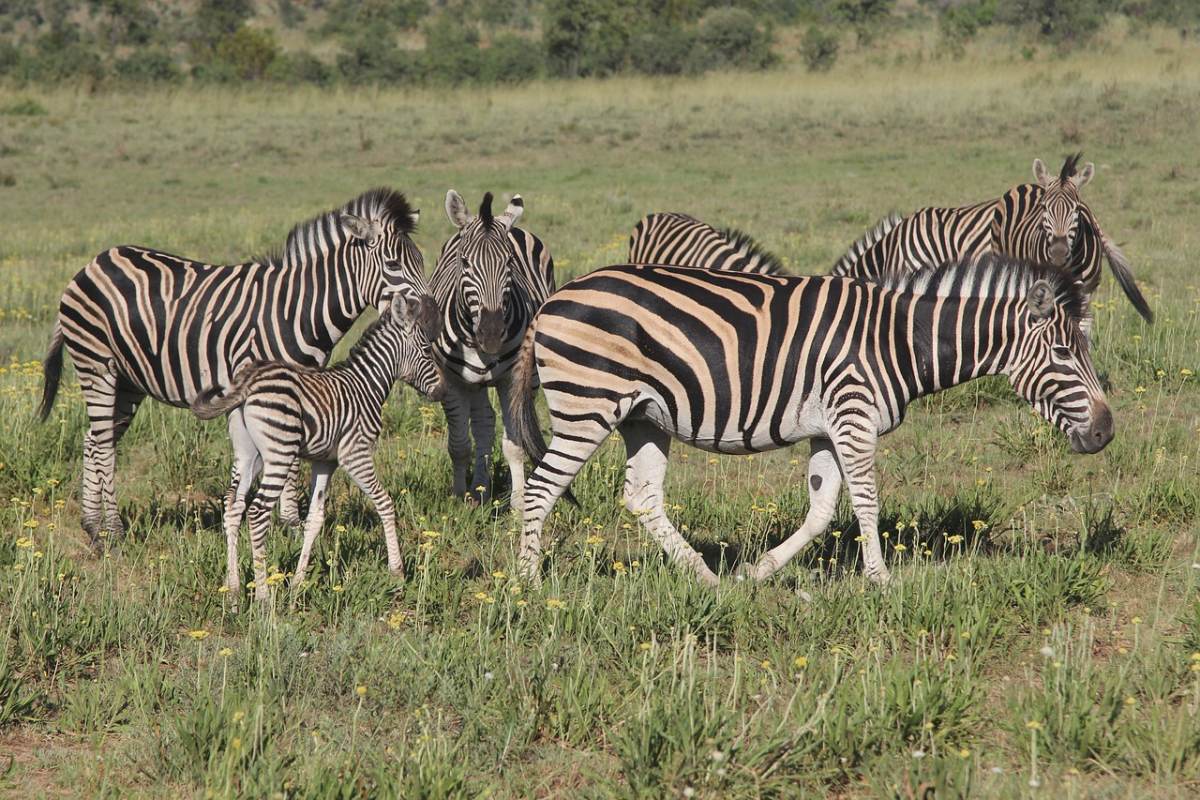
- Name: Burchell’s zebra
- Scientific name: Equus quagga burchellii
- Conservation status:
Burchell’s zebra, also known as the Damaraland zebra, the Zululand zebra, or the bontequagga, is a subspecies of the plains zebra. Compared to its relatives, it is doing quite well, which is why it is the only zebra species that is legally allowed to be farmed for human consumption.
This zebra lives in small family groups, either bachelor groups or harems. While these groups often gather in large herds around food and water sources, they usually stay together and never lose their identity as family units.
12. Ruwenzori colobus
- Name: Ruwenzori colobus
- Scientific name: Colobus angolensis ruwenzorii
- Conservation status:
The Angola colobus, also known as the Angolan colobus or the Angolan black-and-white colobus, is a species of Old World monkey native to southern Central Africa. Its local subspecies in Rwanda is the Ruwenzori colobus.
The Ruwenzori colobus can be found in the Ruwenzori Mountains, which spread across Rwanda and Burundi. It is an acrobatic and arboreal leaf-eater that also feeds on seeds and fruit. This primate moves in groups of several hundreds of monkeys.
—
So there you have them, these were my 12 wild animals in Rwanda. I hope you enjoyed this list and that you learned something new today.
In case you want to learn more about Rwanda wildlife, feel free to keep reading, as I still have lots of things to tell you about:
Endangered Animals of Rwanda
This is definitely the saddest part of the list, but it is very important to raise awareness. Because of this, let’s go through the list of endangered animals in Rwanda.
Here are the animals in danger of extinction in Rwanda.
- Barbus microbarbis
- Eastern gorilla
- Black rhino
- Hooded vulture
- White-backed vulture
- Hills’ horseshoe bat
- and 6 more…
- Congo Bay-owl
- Chimpanzee
- Lappet-faced vulture
- Madagascar pond-heron
- Ashy red colobus
- and 18 more…
To see the full list of Rwanda endangered species, head over to the International Union for Conservation of Nature’s Red List.
What is the National Animal of Rwanda?
The national animal of Rwanda is the African leopard.
There are a lot of big cats in Africa, and while a lot of countries chose the lion to best represent them, it is the African leopard that embodies the spirit of Rwanda.
This leopard subspecies is native to most of sub-Saharan Africa, and is the most widespread of all subspecies. In Rwanda, it is a symbol of royalty, war, power, and authority.
How Many Animals Native to Rwanda?
What is the diversity of native animals in Rwanda?
Let’s look at the total number of species of Chordata (mammals, birds, fishes, and reptiles).
Total number of animal species in Rwanda: 1,129 (14,205 in total in sub-Saharan Africa)
Which golden animal is Rwanda famous for?
Rwanda is renowned on the entire planet for its gorillas, as well as its golden monkeys.
Golden monkeys are sadly critically endangered and on the brink of extinction. They are endemic to the volcanic mountains of Central Africa, which stretch across Rwanda, the Democratic Republic of the Congo, and Uganda, and they usually live in groups of about 60 individuals.
Are there snakes in Rwanda?
There are definitely a lot of snakes in Rwanda and you should definitely be careful when traveling into the wilderness of the country: some specimens might be extremely dangerous!
Some examples of the snakes you will find in Rwanda are the Egyptian cobra, the African egg eater, the puff adder, the red spitting cobra, the black mamba, the green mamba, the African boomslang, the forest twig snake, and the African rock python.
More About Animals in the World!
Loved these Rwanda animal facts? Want to see what animals live in other countries?
Then check out these posts:
Or click here to see ALL the facts up on the blog! Spoiler alert: there’s A LOT of them.
Share the knowledge! Click on the buttons below to share information about these famous animals in Rwanda with your friends, and help them learn more about the world 🙂
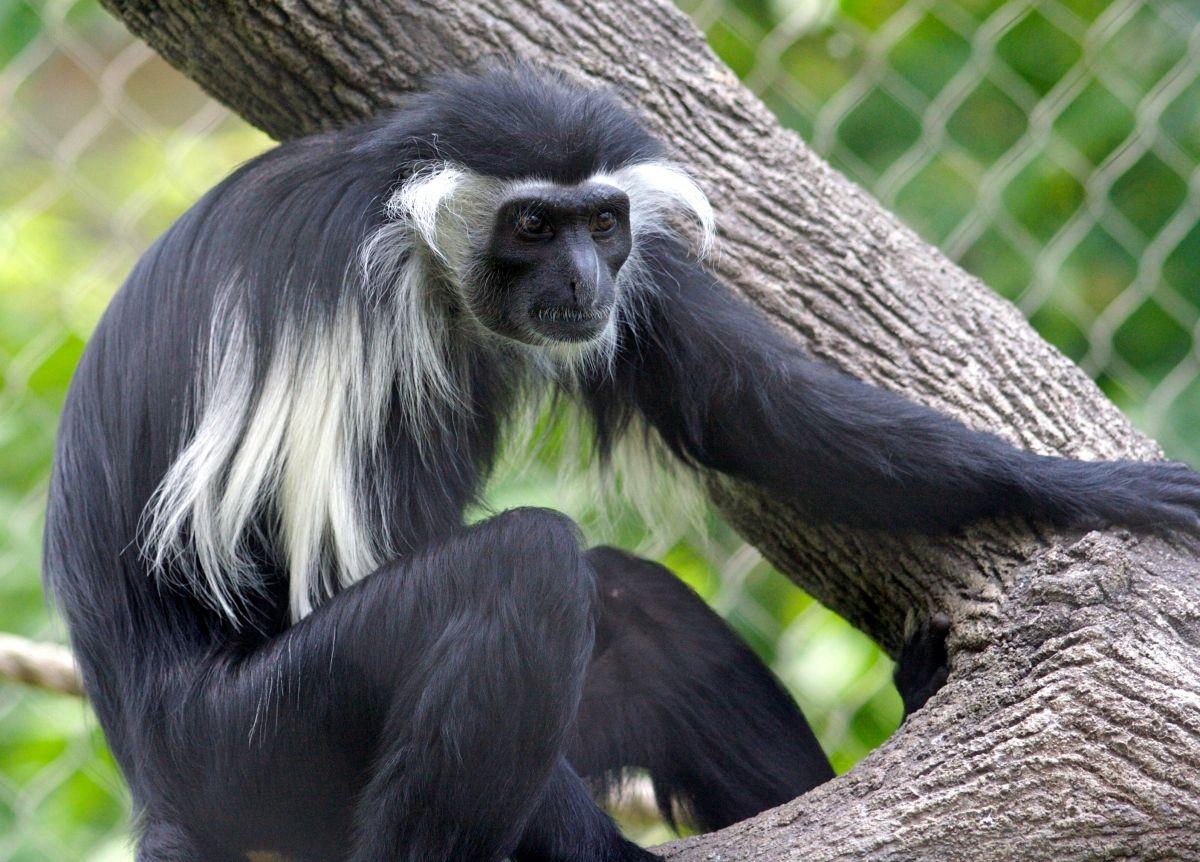

![10 Wild Animals in Solomon Islands [Wildlife in Solomon Islands]](https://www.kevmrc.com/wp-content/uploads/2023/01/10-wild-animals-in-solomon-islands.jpg)
![10 Wild Animals in Algeria [Wildlife in Algeria]](https://www.kevmrc.com/wp-content/uploads/2022/11/10-wild-animals-in-algeria.jpg)
![18 Wild Animals in Cambodia [Wildlife in Cambodia]](https://www.kevmrc.com/wp-content/uploads/2022/12/18-wild-animals-in-cambodia.jpg)